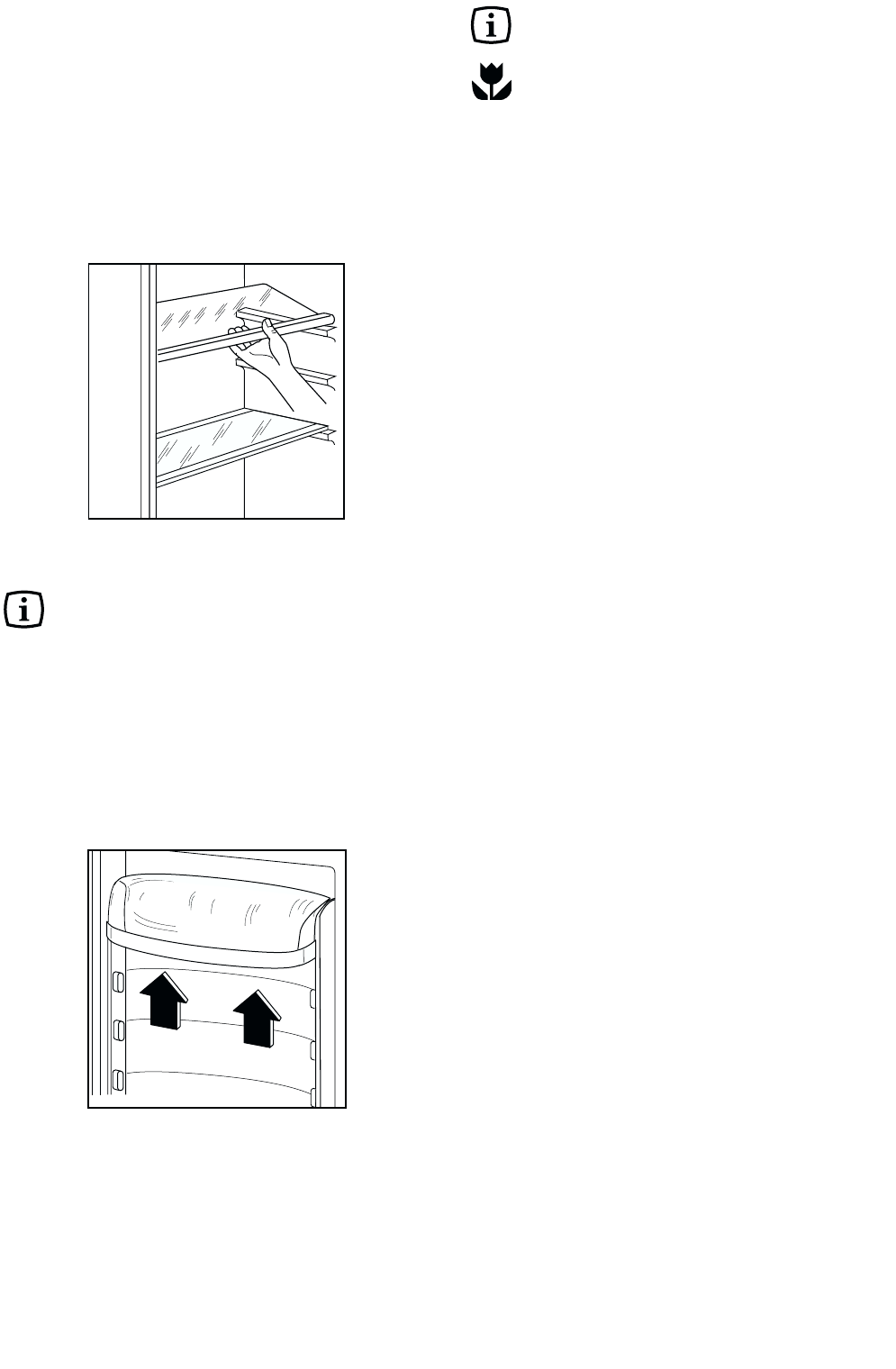
Internal Parts
Storage shelves
• The shelves can be removed for cleaning.
• To permit storage of food packages of various
sizes, the shelves can be placed at different
heights.
• To remove the internal shelf pull forward until it can
be tipped up or down and removed.
• Please do the same in reverse to insert the shelf at
a different height.
• For better use of space, the front half-shelves can
lie over the rear ones.
The glass shelf above the vegetable drawers
and the bottle shelf should always remain in
position, to ensure correct air circulation.
Door shelves
• To permit storage of food packages of various
sizes, the central door shelf can be adjusted in
height.
• Gradually pull the shelf in the direction of the
arrows until it comes free, then reposition as
required.
• For more thorough cleaning, the top and bottom
door sheves can be removed by pulling them in the
direction of the arrows, then refitting them in
position.
13
D338
Hints
Saving Energy
• Pay careful attention to where the cabinet is
placed. See the section “Installation”. When
installed correctly the cabinet will consume less
energy.
• Try to avoid keeping the doors open for long
periods or opening the doors too frequently as
warm air will enter the cabinet and cause the
compressor to switch on unnecessarily often.
• If the ambient temperature is high, the thermostat
knob is on the coldest setting (higher numbers) and
the appliance is fully loaded, the compressor may
run continuously, causing frost or ice to form on the
evaporator. If this happens, turn the knob to a
warmer setting (lower numbers) to allow automatic
defrosting and so a saving in electricity
consumption.
• Do not place warm foods inside the appliance.
Allow warm foods to cool first.
• Keep the heat emitting condenser, the metall grille
on the rear wall of your appliance, always clean.
Hints for refrigeration
• Do not store warm food or evaporating liquids in
the refrigerator and do cover or wrap up the food,
particularly if it has a strong smell.
To help you use your refrigerator correctly, here are
some useful hints:
• Raw meat (beef, pork, lamb & poultry): wrap in
polythene bags and place on top of the salad
compartment, this being the coldest spot in the
refrigerator.
Meat can only be stored safely in this way for
one or two days at the most.
• Cooked food, cold cuts, jelly, etc.: these should
be well covered and can be stored on any of the
glass shelves.
• Fruit & vegetables: these should be thoroughly
cleaned and placed in the bottom drawer/s.
• Butter & cheese: these should be placed in
special airtight containers or wrapped in aluminium
foil or polythene bags to keep out as much air as
possible.
• Milk bottles: these should have a top and should
be stored in the bottle rack on the door.
Bananas, potatoes, onions and garlic, if not
packed, must not be kept in the refrigerator.


















